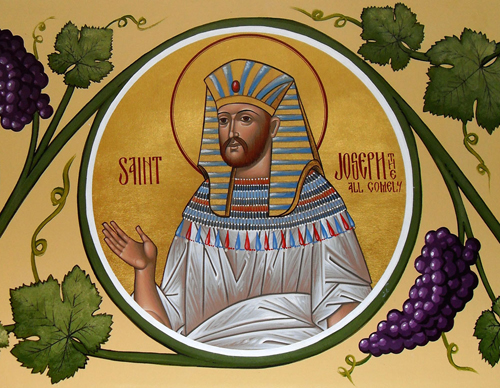The First Bridegroom Service - Joseph and the…
The First Bridegroom Service - Joseph and the sterile fig tree
At the beginning of Holy Week, on the eve of Palm Sunday precisely, we hold the Bridegroom service, which is also celebrated on Monday and Tuesday eves.
"Behold the Bridegroom comes in the middle of the night and blessed is that servant whom He shall find watching…".
This troparion is inspired from the parable of the Ten Virgins in the Gospel of Matthew (25:1-13): “Then shall the reign of the heavens be likened to ten virgins, who, having taken their lamps, went forth to meet the bridegroom”.
The words “bridegroom” in that sense is also found in the midnight service.
This parable calls for constant vigilance to meet the Lord Jesus Christ, the bridegroom of our souls and for struggling to keep our lamps full of joyous oil, the oil of the Holy Spirit.
So we are called to intensify our prayers, not to be carried away in sin, and not to slumber in sloth and neglect the salvation of our souls. “Wherefore he saith, `Arouse thyself, thou who art sleeping, and arise out of the dead, and the Christ shall shine upon thee” (Ephesians 5:14).
The first Bridegroom service, on the eve of Palm Sunday commemorates our Forefather Joseph, the beloved son of Jacob, as a prominent figure of the Old Testament.
 The story of Joseph is found in the last chapter of Genesis (Chapters 37-50). According to the patristic and liturgical traditions, Joseph is considered as a prototype of Christ, due to his virtue and remarkable life story.
The story of Joseph is found in the last chapter of Genesis (Chapters 37-50). According to the patristic and liturgical traditions, Joseph is considered as a prototype of Christ, due to his virtue and remarkable life story.
Joseph was bound and sold as a slave to the Egyptians, but his dignity was restored in the land of Egypt. All of this explains the mystery of the divine economy, the promise, and the redemption that are in Christ. This biblical account about the life of Joseph, and how his humiliation in Egypt lead to a glorious life is a prefiguration of the image of Christ, who condescended and went down to hell as a slave, then turned his death and servitude into eternal life for all humankind.
On the same day, the Church commemorates the cursing of the fig tree (Matthew 21:18-20) and the cleaning of the Temple. These two events are closely related to Holy Week, because they demonstrate the power of Jesus and His divine authority. They foresee God's coming judgment of the Jewish religious leaders for their unbelief. The fig tree symbolizes the sterility of Israel, as this nation failed to accept Christ and to comprehend his teachings. Cursing the fig tree is an allegory, an act instead of a story, and it hints to the fact that all religious traditions which do not bear fruit will wither and die, just as it happened with the thriving fig tree that was fruitless, however.![]()
The Gospel reading is from Matthew 21:18-43.
In this evening, we read the passage from the gospel, where Jesus curses the fig tree, shows His authority, and gives two parables about the Kingdom of Heaven (The Two Sons and the Vineyard).
A lesson: By letting the soul control the body, we follow the path of the chaste Joseph, unlike the sterile fig tree (i.e. the absence of virtuous deeds) by the leaves of which Adam covered his nakedness.
The true power that the Savior shows is opposed to the world: “Whoever wants to be among you first let him be the last of all.”
The church invites us to be vigilant and get ready to meet the bridegroom:
“Let us go with Christ to the Mount of Olives, and mystically joining the apostles let us abide with Him” (Canon for Great Compline on Great Monday Evening).
